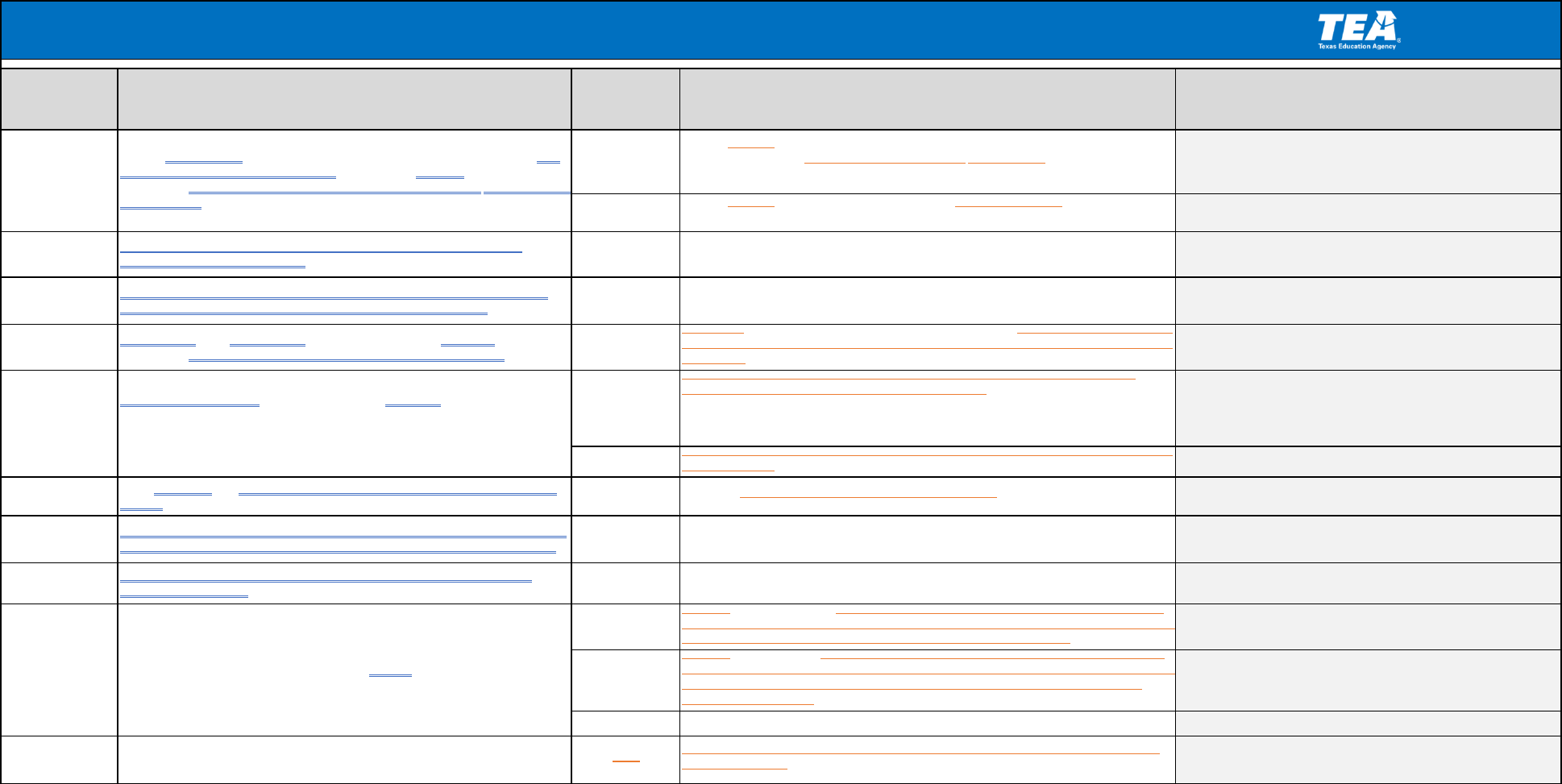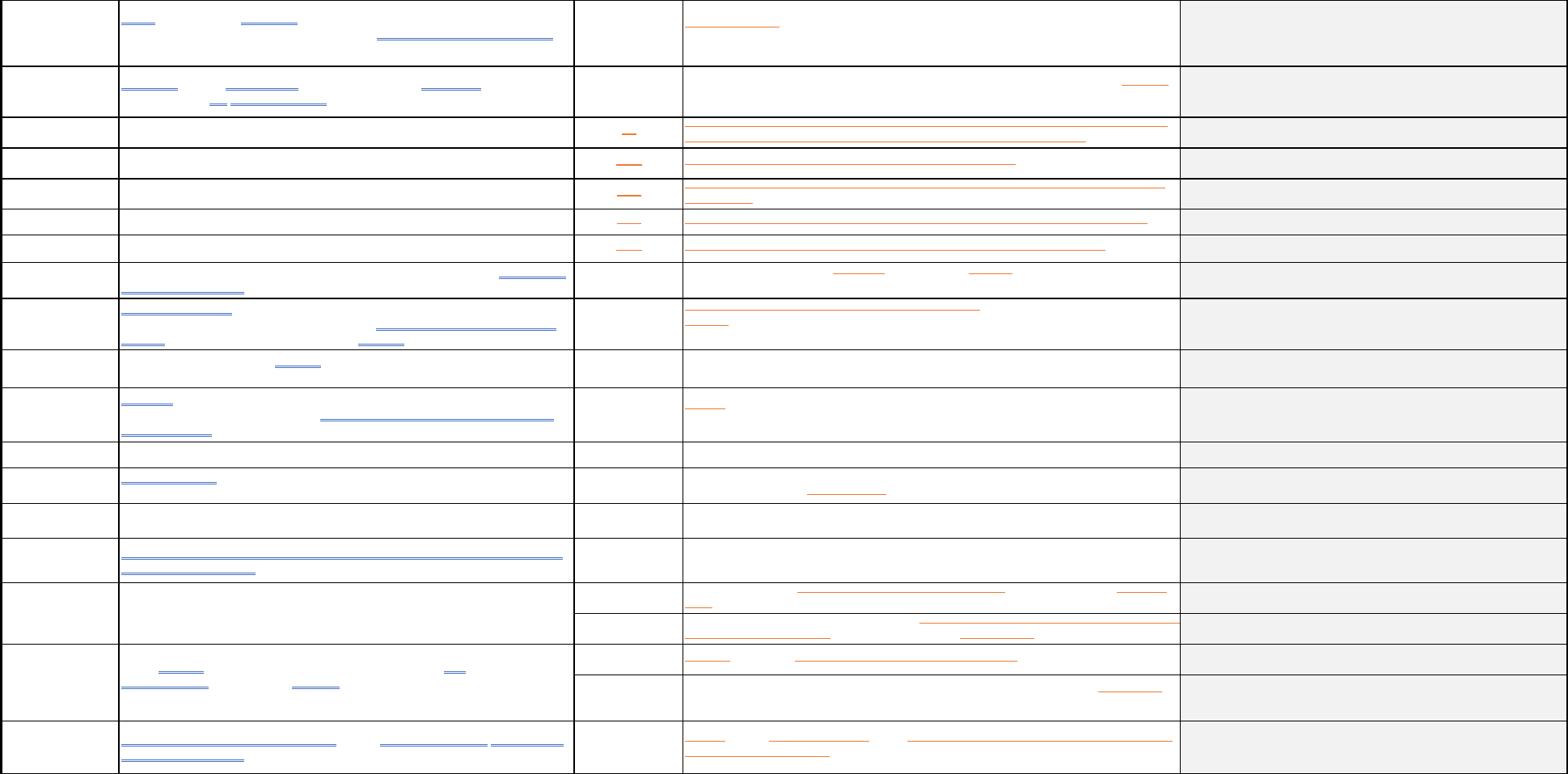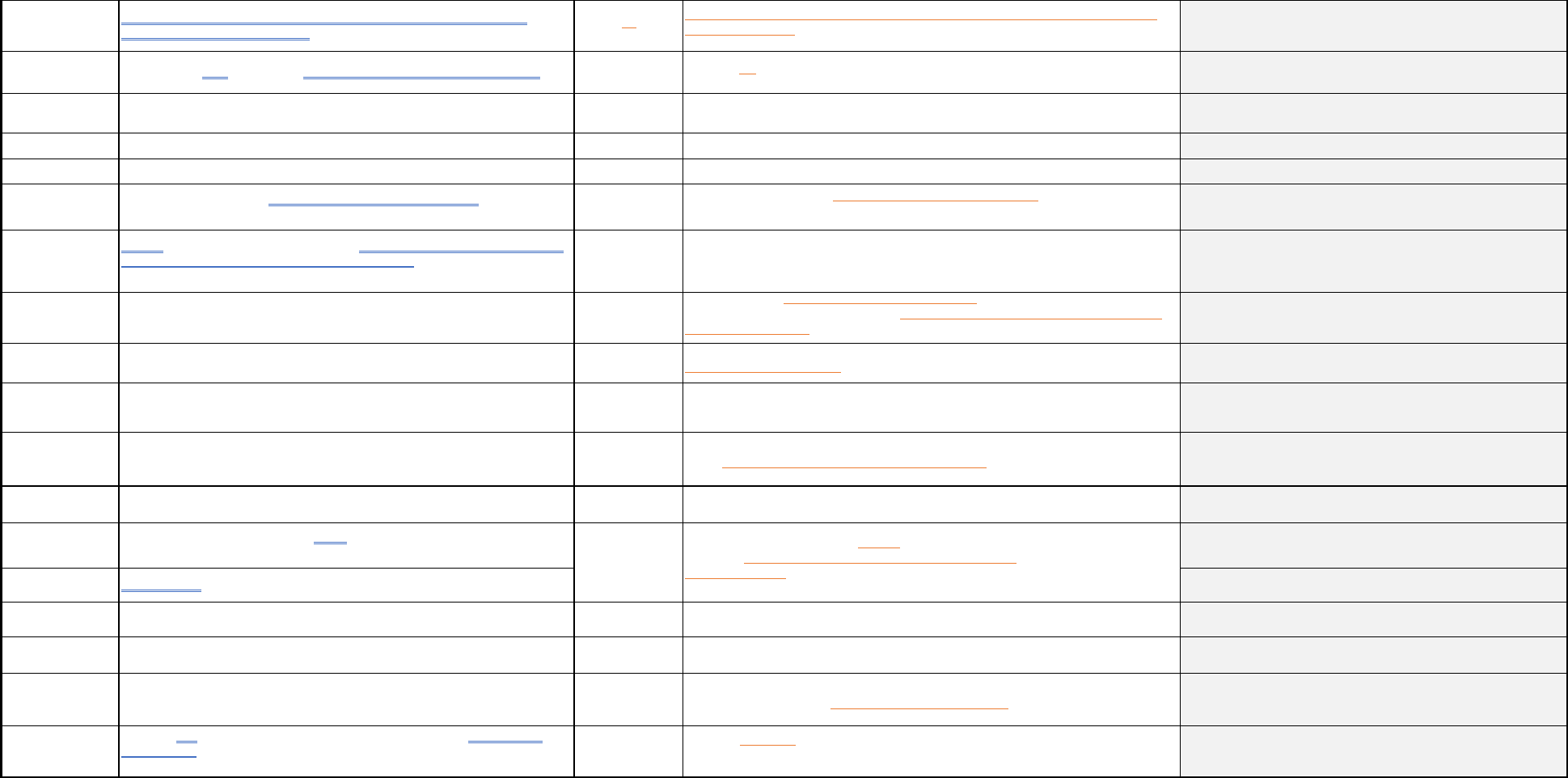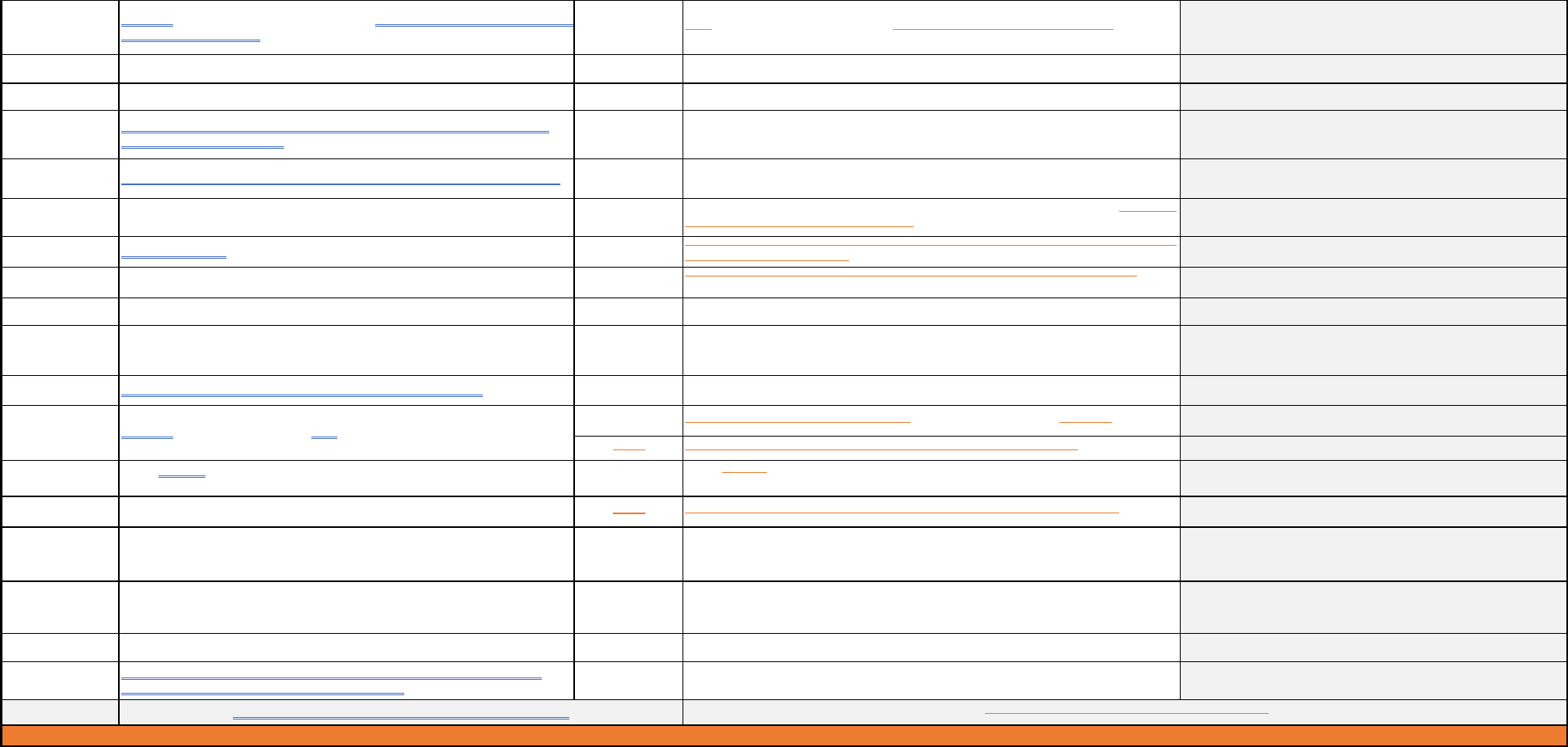
Chemistry Side‐by‐Side
2021 Knowledge and
Skill
Statement/Student
Expectation
2021 Text
2017 Knowledge and
Skill
Statement/Student
Expectation
2017 Text Notes from TEA Staff
SCIENCE.CHEM.1
Scientific and engineering practices. The student, for at least 40% of instructional time, asks
questions, identifies problems, and plans and safely conducts classroom, laboratory, and field
investigations to answer questions, explain phenomena, or design solutions using appropriate
tools and models. The student is expected to:
C.1
Scientific processes. The student, for at least 40% of instructional time, conducts laboratory and field
investigations using safe, environmentally appropriate, and ethical practices. The student is expected
to:
C.2
Scientific processes. The student uses scientific practices and equipment during laboratory and field
investigations. The student is expected to:
SCIENCE.CHEM.1.A
ask questions and define problems based on observations or information from text,
phenomena, models, or investigations;
SCIENCE.CHEM.1.B
apply scientific practices to plan and conduct descriptive, comparative, and experimental
investigations and use engineering practices to design solutions to problems;
SCIENCE.CHEM.1.C
use appropriate safety equipment and practices during laboratory, classroom, and field
investigations as outlined in Texas Education Agency‐approved safety standards;
C.1.A
demonstrate safe practices during laboratory and field investigations, including the appropriate use of
safety showers, eyewash fountains, safety goggles or chemical splash goggles, as appropriate, and fire
extinguishers;
SCIENCE.CHEM.1.D
use appropriate tools such as Safety Data Sheets (SDS), scientific or graphing calculators,
computers and probes, electronic balances, an adequate supply of consumable chemicals,
and sufficient scientific glassware such as beakers, Erlenmeyer flasks, pipettes, graduated
cylinders, volumetric flasks, and burettes;
C.2.E
plan and implement investigative procedures, including asking questions, formulating testable
hypotheses, and selecting equipment and technology, including graphing calculators, computers and
probes, electronic balances, an adequate supply of consumable chemicals, and sufficient scientific
glassware such as beakers, Erlenmeyer flasks, pipettes, graduated cylinders, volumetric flasks, and
burettes;
C.1.B
know specific hazards of chemical substances such as flammability, corrosiveness, and radioactivity as
summarized on the Safety Data Sheets (SDS); and
SCIENCE.CHEM.1.E
collect quantitative data using the International System of Units (SI) and qualitative data as
evidence;
C.2.F collect data and make measurements with accuracy and precision;
SCIENCE.CHEM.1.F
organize quantitative and qualitative data using oral or written lab reports, labeled drawings,
particle diagrams, charts, tables, graphs, journals, summaries, or technology‐based reports;
SCIENCE.CHEM.1.G
develop and use models to represent phenomena, systems, processes, or solutions to
engineering problems; and
SCIENCE.CHEM.1.H
distinguish between scientific hypotheses, theories, and laws.
C.2.B
know that scientific hypotheses are tentative and testable statements that must be capable of being
supported or not supported by observational evidence. Hypotheses of durable explanatory power that
have been tested over a wide variety of conditions are incorporated into theories;
C.2.C
know that scientific theories are based on natural and physical phenomena and are capable of being
tested by multiple independent researchers. Unlike hypotheses, scientific theories are well established
and highly reliable explanations, but may be subject to change as new areas of science and new
technologies are developed;
C.2.D distinguish between scientific hypotheses and scientific theories;
C.1.C
demonstrate an understanding of the use and conservation of resources and the proper disposal or
recycling of materials.
Use and conservation of resources is covered in elementary and middle school
science.

C.2.A
know the definition of science and understand that it has limitations, as specified in subsection (b)(2)
of this section;
SCIENCE.CHEM.2
Scientific and engineering practices. The student analyzes and interprets data to derive
meaning, identify features and patterns, and discover relationships or correlations to develop
evidence‐based arguments or evaluate designs. The student is expected to:
SCIENCE.CHEM.2.A
identify advantages and limitations of models such as their size, scale, properties, and
materials;
SCIENCE.CHEM.2.B
analyze data by identifying significant statistical features, patterns, sources of error, and
limitations;
C.2.H organize, analyze, evaluate, make inferences, and predict trends from data; and
SCIENCE.CHEM.2.C
use mathematical calculations to assess quantitative relationships in data; and C.2.G
express and manipulate chemical quantities using scientific conventions and mathematical
procedures, including dimensional analysis, scientific notation, and significant figures;
SCIENCE.CHEM.2.D
evaluate experimental and engineering designs.
SCIENCE.CHEM.3
Scientific and engineering practices. The student develops evidence‐based explanations and
communicates findings, conclusions, and proposed solutions. The student is expected to:
C.3
Scientific processes. The student uses critical thinking, scientific reasoning, and problem solving to
make informed decisions within and outside the classroom. The student is expected to:
SCIENCE.CHEM.3.A
develop explanations and propose solutions supported by data and models and consistent
with scientific ideas, principles, and theories;
C.3.C draw inferences based on data related to promotional materials for products and services;
SCIENCE.CHEM.3.B
communicate explanations and solutions individually and collaboratively in a variety of
settings and formats; and
C.2.I
communicate valid conclusions supported by the data through methods such as lab reports, labeled
drawings, graphs, journals, summaries, oral reports, and technology‐based reports.
Students are now being asked to communicate not only as scientists but also as
engineers.
SCIENCE.CHEM.3.C
engage respectfully in scientific argumentation using applied scientific explanations and
empirical evidence.
C.3.B
communicate and apply scientific information extracted from various sources such as current events,
published journal articles, and marketing materials;
SCIENCE.CHEM.4
Scientific and engineering practices. The student knows the contributions of scientists and
recognizes the importance of scientific research and innovation on society. The student is
expected to:
SCIENCE.CHEM.4.A
analyze, evaluate, and critique scientific explanations and solutions by using empirical
evidence, logical reasoning, and experimental and observational testing, so as to encourage
critical thinking by the student;
C.3.A
analyze, evaluate, and critique scientific explanations by using empirical evidence, logical reasoning,
and experimental and observational testing, so as to encourage critical thinking by the student;
SCIENCE.CHEM.4.B
relate the impact of past and current research on scientific thought and society, including
research methodology, cost‐benefit analysis, and contributions of diverse scientists as related
to the content; and
C.3.D evaluate the impact of research on scientific thought, society, and the environment;
C.3.F describe the history of chemistry and contributions of scientists.
SCIENCE.CHEM.4.C
research and explore resources such as museums, libraries, professional organizations,
private companies, online platforms, and mentors employed in a science, technology,
engineering, and mathematics (STEM) field in order to investigate STEM careers.
C.3.E describe the connection between chemistry and future careers; and
SCIENCE.CHEM.5
Science concepts. The student understands the development of the Periodic Table and
applies its predictive power. The student is expected to:
C.5
Science concepts. The student understands the historical development of the Periodic Table and can
apply its predictive power. The student is expected to:
SCIENCE.CHEM.5.A
explain the development of the Periodic Table over time using evidence such as chemical and
physical properties;
C.5.A explain the use of chemical and physical properties in the historical development of the Periodic Table;

SCIENCE.CHEM.5.B
predict the properties of elements in chemical families, including alkali metals, alkaline earth
metals, halogens, noble gases, and transition metals, based on valence electrons patterns
using the Periodic Table; and
C.5.B
identify and explain the properties of chemical families, including alkali metals, alkaline earth metals,
halogens, noble gases, and transition metals, using the Periodic Table; and
SCIENCE.CHEM.5.C
analyze and interpret elemental data, including atomic radius, atomic mass, electronegativity,
ionization energy, and reactivity to identify periodic trends.
C.5.C
interpret periodic trends, including atomic radius, electronegativity, and ionization energy, using the
Periodic Table.
C.4
Science concepts. The student knows the characteristics of matter and can analyze the relationships
between chemical and physical changes and properties. The student is expected to:
The concept of physical properties was covered in Grades 3‐8. Chemical
changes are covered in Grades 6‐8.
C.4.A differentiate between physical and chemical changes and properties;
The concept of physical properties was covered in Grades 3‐8. Chemical
changes are covered in Grades 6‐8.
C.4.B
identify extensive properties such as mass and volume and intensive properties such as density and
melting point;
Extensive and Intensive properties have been deleted from Chemistry.
C.4.C compare solids, liquids, and gases in terms of compressibility, structure, shape, and volume; and The properties of solids, liquids, and gasses are covered in Grades 3‐8.
C.4.D classify matter as pure substances or mixtures through investigation of their properties. Pure substances versus mixtures are covered in Grades 6‐8.
SCIENCE.CHEM.6
Science concepts. The student understands the development of atomic theory and applies it
to real‐world phenomena. The student is expected to:
C.6
Science concepts. The student knows and understands the historical development of atomic theory.
The student is expected to:
SCIENCE.CHEM.6.A
construct models using Dalton's Postulates, Thomson's discovery of electron properties,
Rutherford's nuclear atom, Bohr's nuclear atom, and Heisenberg's Uncertainty Principle to
show the development of modern atomic theory over time;
C.6.A
describe the experimental design and conclusions used in the development of modern atomic theory,
including Dalton's Postulates, Thomson's discovery of electron properties, Rutherford's nuclear atom,
and Bohr's nuclear atom;
SCIENCE.CHEM.6.B
describe the structure of atoms and ions, including the masses, electrical charges, and
locations of protons and neutrons in the nucleus and electrons in the electron cloud;
8.5.A
describe the structure of atoms, including the masses, electrical charges, and locations, of protons and
neutrons in the nucleus and electrons in the electron cloud;
Structure of the atom was moved up from middle school.
SCIENCE.CHEM.6.C
investigate the mathematical relationship between energy, frequency, and wavelength of
light using the electromagnetic spectrum and relate it to the quantization of energy in the
emission spectrum;
C.6.B
describe the mathematical relationships between energy, frequency, and wavelength of light using the
electromagnetic spectrum;
SCIENCE.CHEM.6.D
calculate average atomic mass of an element using isotopic composition; and C.6.C calculate average atomic mass of an element using isotopic composition; and
SCIENCE.CHEM.6.E
construct models to express the arrangement of electrons in atoms of representative
elements using electron configurations and Lewis dot structures.
C.6.D
express the arrangement of electrons in atoms of representative elements using electron
configurations and Lewis valence electron dot structures.
SCIENCE.CHEM.7
Science concepts. The student knows how atoms form ionic, covalent, and metallic bonds.
The student is expected to:
C.7
Science concepts. The student knows how atoms form ionic, covalent, and metallic bonds. The student
is expected to:
SCIENCE.CHEM.7.A
construct an argument to support how periodic trends such as electronegativity can predict
bonding between elements;
SCIENCE.CHEM.7.B
name and write the chemical formulas for ionic and covalent compounds using International
Union of Pure and Applied Chemistry (IUPAC) nomenclature rules;
C.7.A
name ionic compounds containing main group or transition metals, covalent compounds, acids, and
bases using International Union of Pure and Applied Chemistry (IUPAC) nomenclature rules;
Acids and bases were separated into their own Knowledge and Skill statements.
C.7.B
write the chemical formulas of ionic compounds containing representative elements, transition metals
and common polyatomic ions, covalent compounds, and acids and bases;
SCIENCE.CHEM.7.C
classify and draw electron dot structures for molecules with linear, bent, trigonal planar,
trigonal pyramidal, and tetrahedral molecular geometries as explained by Valence Shell
Electron Pair Repulsion (VSEPR) theory; and
C.7.C construct electron dot formulas to illustrate ionic and covalent bonds;
C.7.E
classify molecular structure for molecules with linear, trigonal planar, and tetrahedral electron pair
geometries as explained by Valence Shell Electron Pair Repulsion (VSEPR) theory.
SCIENCE.CHEM.7.D
analyze the properties of ionic, covalent, and metallic substances in terms of intramolecular
and intermolecular forces.
C.7.D
describe metallic bonding and explain metallic properties such as thermal and electrical conductivity,
malleability, and ductility; and
The concept of metallic bonding was expanded to include more types of
substances and their properties.

SCIENCE.CHEM.8
Science concepts. The student understands how matter is accounted for in chemical
substances. The student is expected to:
C.8
Science concepts. The student can quantify the changes that occur during chemical reactions. The
student is expected to:
SCIENCE.CHEM.8.A
define mole and apply the concept of molar mass to convert between moles and grams; C.8.A define and use the concept of a mole;
SCIENCE.CHEM.8.B
calculate the number of atoms or molecules in a sample of material using Avogadro's
number;
C.8.B calculate the number of atoms or molecules in a sample of material using Avogadro's number;
SCIENCE.CHEM.8.C
calculate percent composition of compounds; and C.8.C calculate percent composition of compounds;
SCIENCE.CHEM.8.D
differentiate between empirical and molecular formulas. C.8.D differentiate between empirical and molecular formulas;
SCIENCE.CHEM.9
Science concepts. The student understands how matter is accounted for in chemical
reactions. The student is expected to:
C.8
Science concepts. The student can quantify the changes that occur during chemical reactions. The
student is expected to:
SCIENCE.CHEM.9.A
interpret, write, and balance chemical equations, including synthesis, decomposition, single
replacement, double replacement, and combustion reactions using the law of conservation of
mass;
C.8.E write and balance chemical equations using the law of conservation of mass;
SCIENCE.CHEM.9.B
differentiate among acid‐base reactions, precipitation reactions, and oxidation‐reduction
reactions;
C.8.F
differentiate among double replacement reactions, including acid‐base reactions and precipitation
reactions, and oxidation‐reduction reactions such as synthesis, decomposition, single replacement,
and combustion reactions;
SCIENCE.CHEM.9.C
perform stoichiometric calculations, including determination of mass relationships, gas
volume relationships, and percent yield; and
C.8.G
perform stoichiometric calculations, including determination of mass and gas volume relationships
between reactants and products and percent yield; and
SCIENCE.CHEM.9.D
describe the concept of limiting reactants in a balanced chemical equation. C.8.H describe the concept of limiting reactants in a balanced chemical equation.
SCIENCE.CHEM.10
Science concepts. The student understands the principles of the kinetic molecular theory and
ideal gas behavior. The student is expected to:
C.9
Science concepts. The student understands the principles of ideal gas behavior, kinetic molecular
theory, and the conditions that influence the behavior of gases. The student is expected to:
SCIENCE.CHEM.10.A
describe the postulates of the kinetic molecular theory; C.9.B describe the postulates of kinetic molecular theory.
SCIENCE.CHEM.10.B
describe and calculate the relationships among volume, pressure, number of moles, and
temperature for an ideal gas; and
C.9.A
describe and calculate the relations between volume, pressure, number of moles, and temperature for
an ideal gas as described by Boyle's law, Charles' law, Avogadro's law, Dalton's law of partial pressure,
and the ideal gas law; and
SCIENCE.CHEM.10.C
define and apply Dalton's law of partial pressure.
SCIENCE.CHEM.11
Science concepts. The student understands and can apply the factors that influence the
behavior of solutions. The student is expected to:
C.10
Science concepts. The student understands and can apply the factors that influence the behavior of
solutions. The student is expected to:
SCIENCE.CHEM.11.A
describe the unique role of water in solutions in terms of polarity; C.10.A describe the unique role of water in solutions in terms of polarity;
SCIENCE.CHEM.11.B
distinguish among types of solutions, including electrolytes and nonelectrolytes and
unsaturated, saturated, and supersaturated solutions;
C.10.E
distinguish among types of solutions such as electrolytes and nonelectrolytes; unsaturated, saturated,
and supersaturated solutions; and strong and weak acids and bases;
The types of solutions and acids and bases were split into two separate Student
Expectations, C.11.B and C.12.C.
SCIENCE.CHEM.11.C
investigate how solid and gas solubilities are influenced by temperature using solubility
curves and how rates of dissolution are influenced by temperature, agitation, and surface
area;
C.10.F
investigate factors that influence solid and gas solubilities and rates of dissolution such as
temperature, agitation, and surface area;

SCIENCE.CHEM.11.D
investigate the general rules regarding solubility and predict the solubility of the products of a
double replacement reaction;
C.10.B apply the general rules regarding solubility through investigations with aqueous solutions;
SCIENCE.CHEM.11.E
calculate the concentration of solutions in units of molarity; and C.10.C calculate the concentration of solutions in units of molarity;
SCIENCE.CHEM.11.F
calculate the dilutions of solutions using molarity. C.10.D calculate the dilutions of solutions using molarity;
SCIENCE.CHEM.12
Science concepts. The student understands and applies various rules regarding acids and
bases. The student is expected to:
SCIENCE.CHEM.12.A
name and write the chemical formulas for acids and bases using IUPAC nomenclature rules;
SCIENCE.CHEM.12.B
define acids and bases and distinguish between Arrhenius and Bronsted‐Lowry definitions; C.10.G
define acids and bases and distinguish between Arrhenius and Bronsted‐Lowry definitions and predict
products in acid‐base reactions that form water; and
Defining acids and bases and predicting the products of reactions were split
into two separate Student Expectations, C.12.B and C.12.D.
SCIENCE.CHEM.12.C
differentiate between strong and weak acids and bases; C.10.E
distinguish among types of solutions such as electrolytes and nonelectrolytes; unsaturated, saturated,
and supersaturated solutions; and strong and weak acids and bases;
The types of solutions and acids and bases were split into two separate Student
Expectations, C.11.B and C.12.C.
SCIENCE.CHEM.12.D
predict products in acid‐base reactions that form water; and C.10.G
define acids and bases and distinguish between Arrhenius and Bronsted‐Lowry definitions and predict
products in acid‐base reactions that form water; and
Defining acids and bases and predicting the products of reactions were split
into two separate Student Expectations, C.12.B and C.12.D.
SCIENCE.CHEM.12.E
define pH and calculate the pH of a solution using the hydrogen ion concentration. C.10.H define pH and calculate the pH of a solution using the hydrogen ion concentration.
SCIENCE.CHEM.13
Science concepts. The student understands the energy changes that occur in chemical
reactions. The student is expected to:
C.11
Science concepts. The student understands the energy changes that occur in chemical reactions. The
student is expected to:
SCIENCE.CHEM.13.A
explain everyday examples that illustrate the four laws of thermodynamics;
SCIENCE.CHEM.13.B
investigate the process of heat transfer using calorimetry;
C.11.B describe the law of conservation of energy and the processes of heat transfer in terms of calorimetry; Conservation of energy is covered in Grades 6‐8.
C.11.D perform calculations involving heat, mass, temperature change, and specific heat.
SCIENCE.CHEM.13.C
classify processes as exothermic or endothermic and represent energy changes that occur in
chemical reactions using thermochemical equations or graphical analysis; and
C.11.C
classify reactions as exothermic or endothermic and represent energy changes that occur in chemical
reactions using thermochemical equations or graphical analysis; and
C.11.A describe energy and its forms, including kinetic, potential, chemical, and thermal energies;
The concepts of kinetic, potential, chemical, and thermal energy are covered in
Grades 6‐8.
SCIENCE.CHEM.14
Science concepts. The student understands the basic processes of nuclear chemistry. The
student is expected to:
C.12
Science concepts. The student understands the basic processes of nuclear chemistry. The student is
expected to:
SCIENCE.CHEM.14.A
describe the characteristics of alpha, beta, and gamma radioactive decay processes in terms
of balanced nuclear equations;
C.12.A
describe the characteristics of alpha, beta, and gamma radioactive decay processes in terms of
balanced nuclear equations; and
SCIENCE.CHEM.14.B
compare fission and fusion reactions; and C.12.B compare fission and fusion reactions.
SCIENCE.CHEM.14.C
give examples of applications of nuclear phenomena such as nuclear stability, radiation
therapy, diagnostic imaging, solar cells, and nuclear power.
KEY
Blue double underline: indicates content new to the grade level Orange strike through: indicates content was deleted
Copyright © Texas Education Agency, 2022. All rights reserved.
